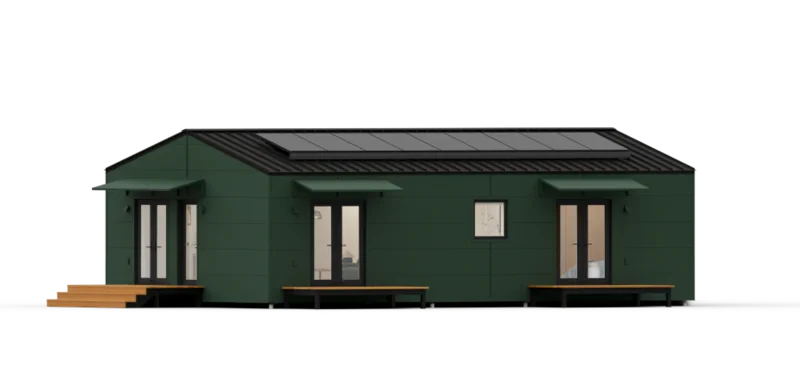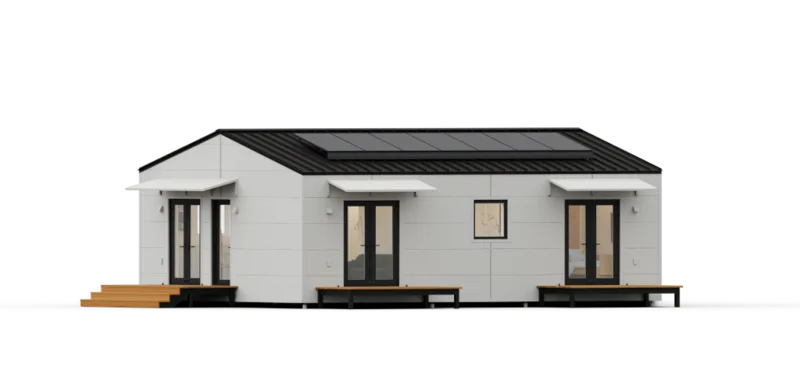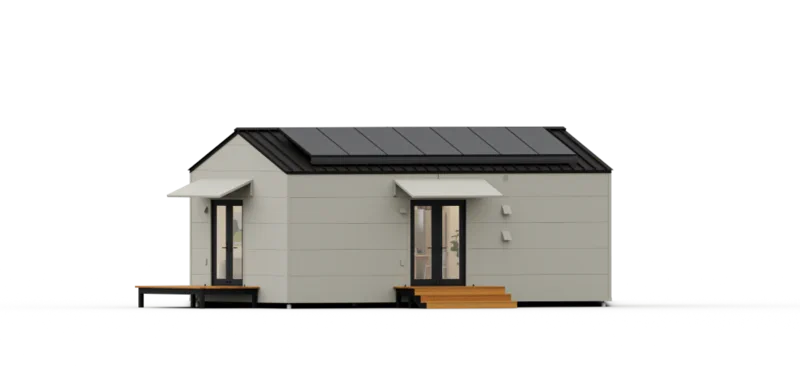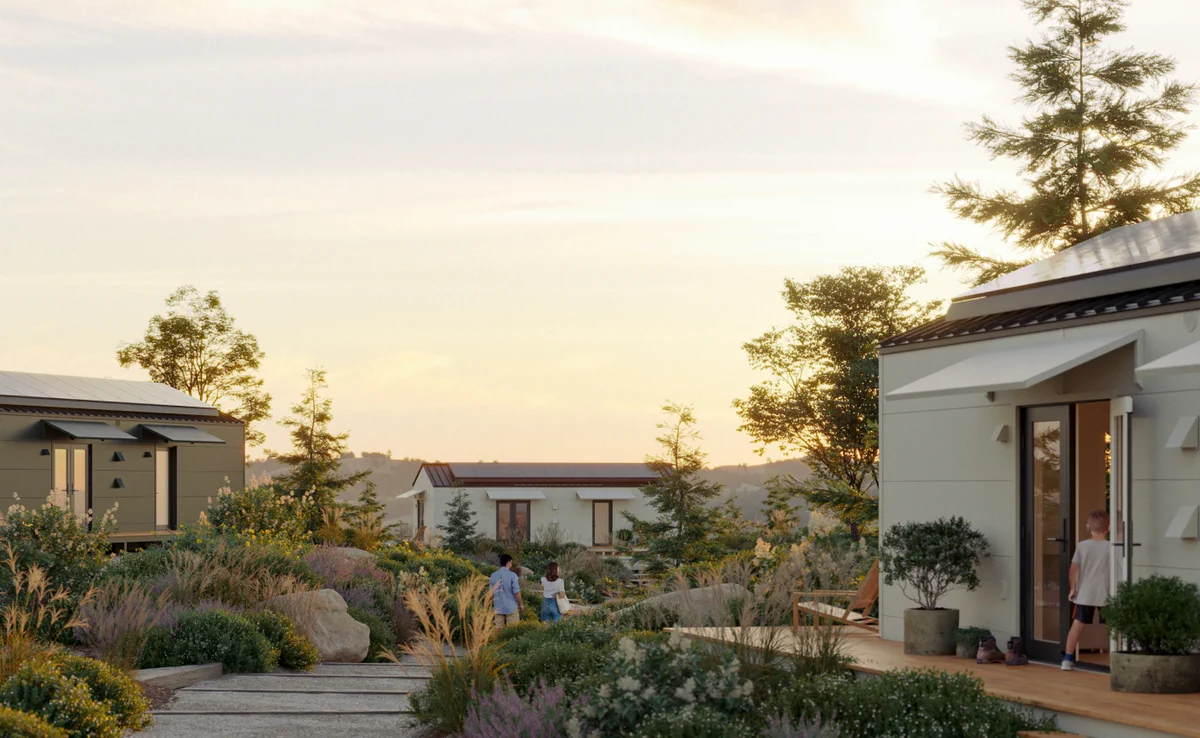What Is Considered an ADU in California?
Accessory dwelling units (ADUs) are known by many names — granny flats, coach houses, ohana units, backyard bungalows, and alley flats — but it can be challenging to find a definitive answer as to what characterizes an ADU. If you’re considering adding an ADU to your property, understanding what you’re getting into is the first, often overlooked, yet critical step in a lengthy process.
Below, take a deep dive into what separates an ADU from other types of home construction to determine if adding one to your property is right for you.
California ADUs explained
California defines an ADU as an attached or detached residential dwelling unit that provides complete independent living facilities for one or more persons and is located on a lot with a proposed or existing primary residence. They must include permanent provisions for living, sleeping, eating, cooking, and sanitation on the same parcel as the primary dwelling. AARP contextualizes that definition to characterize ADUs as self-contained living spaces of various types.
Additional official ADU features are often established and governed by city zoning and development entities, so be sure to check with your local planning department for the most accurate and updated information.
Homeowners must permit ADUs before construction begins and comply with local regulations. Various types of ADUs exist, with a multitude of exterior and interior features dictated by how homeowners intend to use the extra space.
ADU exterior and interior features
Similar to the process of building an ADU in your backyard, visualizing the design and layout can help give it shape.
Below are the key characteristics of an ADU in California:
- Square footage: Local governments can establish minimum and maximum size requirements for both attached and detached ADUs. While ADUs typically range from 600-1,000 square feet, units created from the conversion of an existing accessory structure (i.e. a garage or barn) or square footage within the primary residence are not subject to unit size requirements. ADUs smaller than 750 square feet are exempt from costly impact fees, and units that are 800 square feet or less can meet the criteria for a Statewide Exemption ADU which is granted additional streamlined approval.
- Bedrooms and bathrooms: ADUs typically incorporate at least one bedroom and one bathroom into their design, but larger ADUs can house two bedrooms or more.
- Overall height: An ADU attached to your home can be up to 25 feet tall or as tall as the primary residence (whichever is lower) and a detached ADU can be up to 16 feet tall, or 18 feet tall if it is on a lot within half a mile of public transport.
- Parking: California doesn’t require homeowners to provide parking for an ADU if the unit is located within a half-mile of public transport, one block from a car-share vehicle, or within a historic district.
- Mailing address: Many jurisdictions will have locally adopted addressing standards. Establishing a separate address ensures renters receive their mail — and emergency service assistance if necessary.
Based on their small footprint, ADUs are often confused with tiny homes. Although they share the concept of a compact living space, ADUs require a foundation and permitting, while tiny homes tend to be more mobile. Landowners can also place a tiny home on a designated parcel, while ADUs typically exist as an addition to a primary residence.
Samara has an ADU for every yard.
Choose from five prefab models.

supersized.

and then some.

Too perfect.

for everything.

Yay big.
Types of ADUs
Several types of ADUs exist, including detached, attached, and converted. Detached ADUs are often the easiest to spot because they are separate from the primary residence. In comparison to the main house, a detached ADU is a self-contained, self-sufficient dwelling with its own living spaces, bathroom(s), and kitchen.
Attached ADUs share part of the existing structure with the main house but require additional construction, similar to an add-on or home addition. Most attached and converted ADUs have a separate entrance so occupants can come and go as they please. Homeowners typically convert garages, storage rooms, basements, and attics to ADUs.
Location and number of ADUs
Like single-family residences and multi-family dwellings, ADUs require a lot that’s zoned for residential rather than commercial or industrial use. However, you can typically find ADUs in rural and urban areas in California, from big cities like Los Angeles and San Francisco to the small suburbs of Laguna Beach or Santa Barbara.
As long as an ADU complies with local zoning and building codes and is permitted by the governing city, it can legally exist in almost any type of environment.
Similarly, owner occupancy isn’t required in all Californian jurisdictions, allowing homeowners to build an ADU on property they’re currently renting but don’t use as their primary residence. In addition, multi-family dwelling property owners can build at least one conversion ADU and up to two detached ADUs on a single plot if permissible.
On lots with existing multi-family dwellings, property owners can convert non-livable space into ADUs. The number of ADUs created cannot exceed 25% of the total number of existing dwelling units.
ADU space utilization
Homeowners can also distinguish ADUs based on their intended use. At the core of California ADUs lies a need for affordable housing in a state with a high cost of living.
Here are a few ways homeowners put their ADUs to use:
- Alternative for senior loved ones to age in place
- Separate living space for college students or young adults
- Office space for those who work from home
- Rental space to supplement income
- Recreational space for hobbies or families with children
According to AB 1033, homeowners can build and sell ADUs as condominiums under certain circumstances. However, most ADUs must remain with the primary residence when bought or sold.
Permitted space
Building an ADU legally, regardless of the type of ADU you select, requires a permit from your local city planning and development department. Homeowners can choose to obtain permits themselves or leave the permitting process up to a general contractor or licensed ADU builder. If you’re researching ADU costs in California, understanding how factors like permitting, square footage, and construction methodology impact your budget can help you plan effectively.
Even if you purchase a prefabricated ADU, you must still obtain a permit to install it on your property. In California, permitting agencies have up to 60 days to approve or deny an ADU permit application once a complete application has been submitted.
Should the city planning department reject your ADU permit application, they must provide you with detailed reasons for the denial and a solution for fixing those errors or making the appropriate corrections. Each city has the authority to establish and enforce ADU permitting fees, including impact fees.
What are junior accessory dwelling units (JADUs)?
If you’ve done any research on ADUs, chances are you’ve come across the acronym JADU. Otherwise known as a junior accessory dwelling unit, JADUs are restricted to 500 square feet or less and must be constructed within the confines of an existing single-family residence.
A JADU doesn’t expand the expected occupancy of the home, and construction costs often total much less than a traditional ADU. In contrast to ADUs, a JADU cannot be bought or sold separately from the house.
However, homeowners can still rent out the space or use it to house a college student or aging loved one. Many may find this arrangement more amicable than a nursing home or off-campus apartment, as the JADU can share a bathroom and many central systems with the primary residence while still maintaining a separate living space.
How are ADUs financed?
Many homeowners use cash-out refinancing, construction or renovation loans, home equity loans, or home equity lines of credit to fund their ADU projects. We also have an in-depth guide on ADU grants in California.
For those considering financing options specifically tailored to ADU construction, Samara offers a unique solution: financing that doesn’t require swapping their current mortgage payment — and, more importantly, low interest rate — for a costlier loan.
Instead, Samara financing provides homeowners with APRs as low as 6.5% with as little as no money down and no payments or interest for the first six months.
Invest in your own Samara Backyard ADU
Samara takes the guesswork out of designing, building, and enjoying an ADU with five expertly prefabricated Backyard ADU floor plans to choose from. Homeowners benefit from a proven, straightforward process that spans seven months, including permitting.
Samara’s efficient supply chain and experienced team turn 30 days of on-site labor into a move-in-ready ADU homeowners can enjoy however and whenever they please.
Schedule a 15-minute call with a Samara specialist to learn more about our Backyard ADU and how incorporating it into your property can benefit you. Our specialists are also available at 650-420-2607 to answer any questions. Samara also works with developers to maximize available space and offer affordable housing.
Samara’s efficient supply chain and experienced team turn 30 days of on-site labor into a move-in-ready ADU homeowners can enjoy however and whenever they please.
Schedule a 15-minute call with a Samara specialist to learn more about our Backyard ADU and how incorporating it into your property can benefit you. Our specialists are also available at 650-420-2607 to answer any questions. Samara also works with developers and hospitality providers to add high-quality, prefab housing to properties.
Samara Finance, LLC is licensed by the Department of Financial Protection and Innovation.
Samara does not make loans. All loans are made by Samara’s third-party lender partners. Loans made or arranged pursuant to a California Financing Law, license number 60DBO-188555, NMLS Consumer Access number 2549049.
Sources:
With five prefab models, Samara has an ADU for every yard.
Explore the lineup




